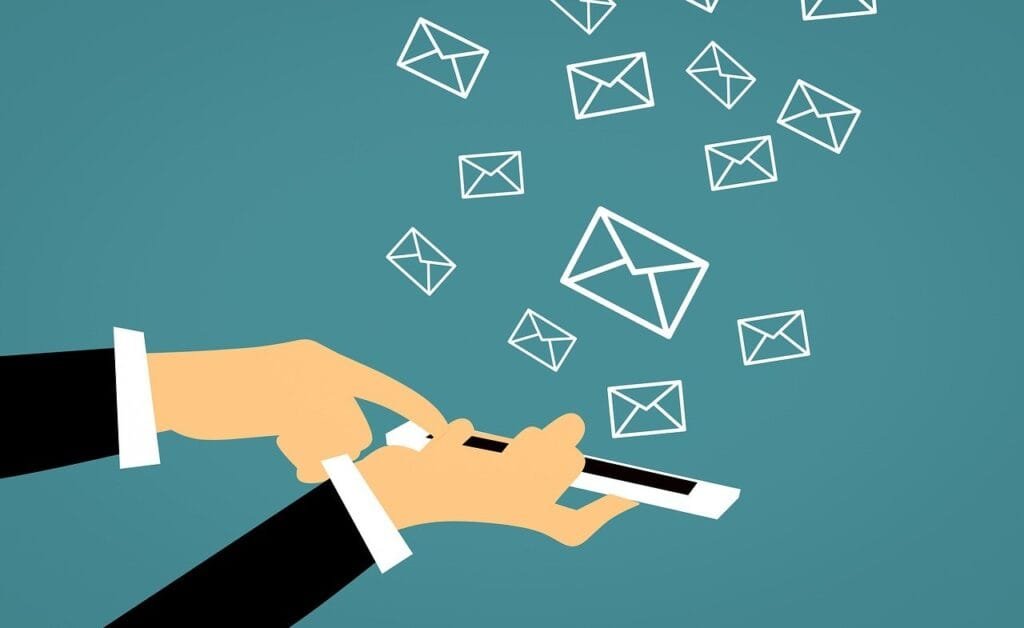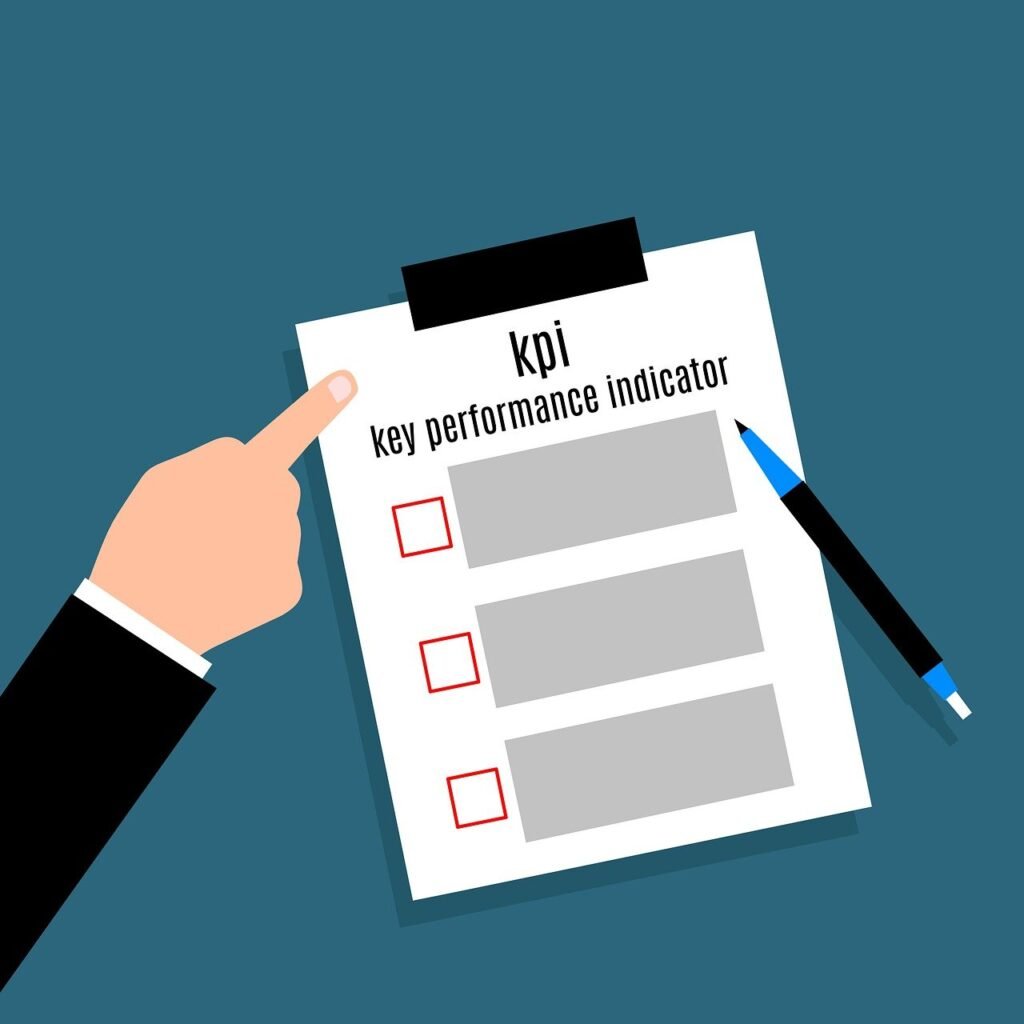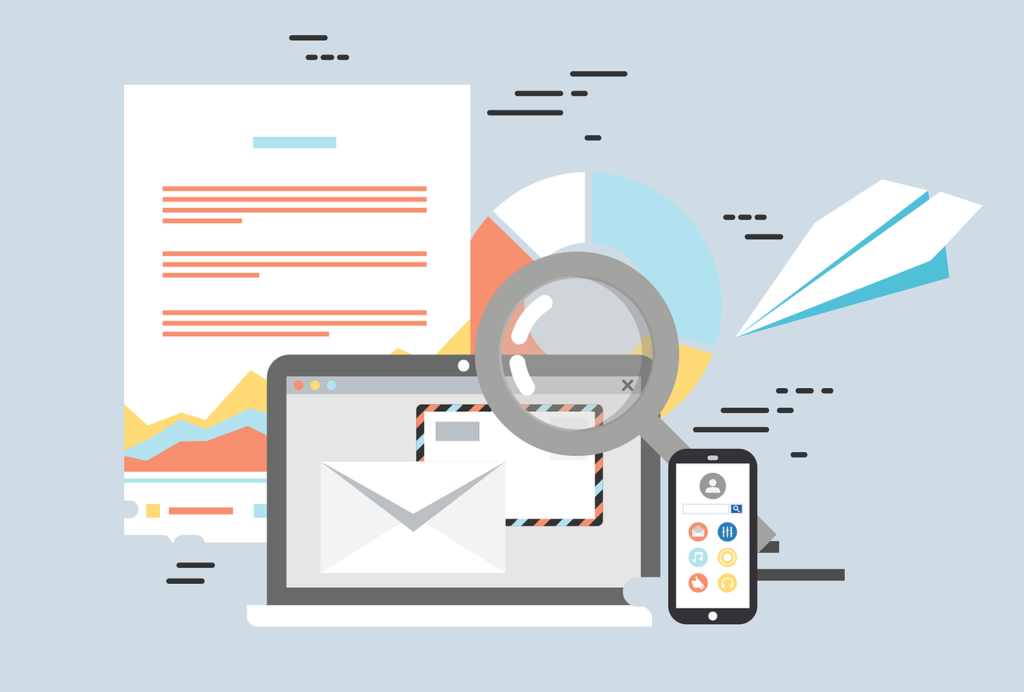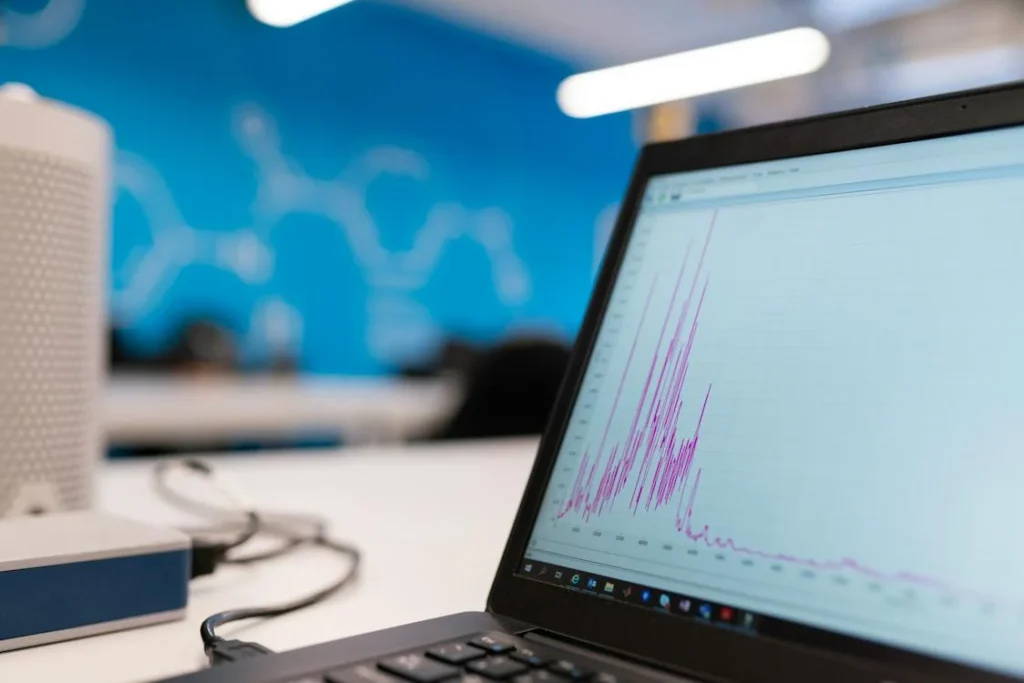This Article has been revised, edited and added to, by Poulomi Chakraborty.
- Understanding the Basics of Personalization
- Crafting Personalized Email Content
- Tools and Technologies for Personalizing Email Marketing
- Best Practices for Effective Personalized Email Marketing
- Start with Clean and Comprehensive Data
- Segment Your Audience Strategically
- Personalize Beyond the First Name
- Craft Compelling Subject Lines
- Optimize for Mobile Devices
- Test and Analyze Your Campaigns
- Build a Strong Relationship with Your Subscribers
- Real-World Example: Nike
- Avoid Common Personalization Pitfalls
- Stay Compliant with Data Privacy Regulations
- Measuring the Success of Personalized Email Campaigns
- Setting Clear Objectives and Key Performance Indicators (KPIs)
- Tracking and Analyzing Metrics
- Using A/B Testing to Optimize Campaigns
- Real-World Example: Sephora
- Leveraging Advanced Analytics and Reporting Tools
- Real-World Example: Airbnb
- Collecting and Analyzing Feedback
- Real-World Example: Zappos
- Continuous Improvement and Adaptation
- Real-World Example: Netflix
- Common Challenges and How to Overcome Them
- Data Privacy and Compliance
- Real-World Example: Mailchimp
- Maintaining Data Quality
- Integrating Multiple Data Sources
- Real-World Example: HubSpot
- Balancing Personalization with Privacy
- Real-World Example: Spotify
- Ensuring Consistent Personalization
- Real-World Example: Apple
- Dealing with Technological Limitations
- Real-World Example: Amazon
- Overcoming Internal Resistance
- Real-World Example: Coca-Cola
- Adapting to Changing Consumer Expectations
- Real-World Example: Netflix
- Conclusion
In the crowded digital landscape, capturing and maintaining the attention of your audience can be challenging. With inboxes overflowing with generic, impersonal messages, standing out requires more than just clever subject lines. This is where personalization in email marketing comes into play. Personalized emails, when done right, can make your audience feel seen, valued, and understood. This article will delve into the art and science of crafting tailored email messages that resonate with your audience, driving engagement and conversions.
Email marketing has come a long way since its inception. In the early days, mass emails were the norm, with businesses sending the same message to their entire subscriber list. While this approach had its moment, it quickly became clear that one-size-fits-all emails were ineffective. Recipients began to ignore these generic messages, and email open rates plummeted. Enter personalization – a game-changer in the world of email marketing.
Personalization goes beyond merely addressing your recipients by their first names. It involves using data and insights to create messages that speak directly to the interests, behaviors, and needs of each individual. Think of it as the difference between receiving a handwritten letter from a friend versus a mass-produced flyer. Which one would you be more likely to read?
Understanding the Basics of Personalization

In today’s digital age, consumers are bombarded with marketing messages from all directions. The average person receives over 100 emails per day, many of which go unread. With such high competition for attention, personalization is no longer a luxury – it’s a necessity.
Personalized emails stand out because they offer relevant content that resonates with the recipient. This relevance is what drives higher engagement and, ultimately, better results.
When you personalize an email, you’re not just inserting a name into the greeting. True personalization considers the recipient’s preferences, behaviors, and past interactions with your brand. This level of detail makes the recipient feel valued and understood, fostering a stronger connection with your brand.
The Benefits of Personalized Email Marketing
The advantages of personalized email marketing are manifold. Here are some key benefits:
- Increased Open Rates: Personalized subject lines can significantly boost open rates. When recipients see their name or content that aligns with their interests, they’re more likely to open the email.
- Higher Click-Through Rates: Tailored content encourages recipients to engage with your emails. When the message speaks directly to their needs or interests, they are more likely to click through to your website or landing page.
- Improved Conversion Rates: Personalization can lead to higher conversion rates. By presenting relevant offers and recommendations, you make it easier for recipients to make purchasing decisions.
- Enhanced Customer Loyalty: When customers feel understood and valued, they are more likely to stay loyal to your brand. Personalized emails help build this sense of loyalty and trust.
- Reduced Unsubscribe Rates: Irrelevant emails often lead to higher unsubscribe rates. Personalization helps ensure that your content is always relevant, keeping your subscribers engaged and reducing the likelihood of them opting out.
Key Elements of Email Personalization
Effective email personalization involves several key elements. Here’s a closer look at each one:
Segmentation
Segmentation is the foundation of personalized email marketing. It involves dividing your email list into smaller groups based on specific criteria. These criteria can include demographics, purchase history, engagement levels, and more. By segmenting your audience, you can create targeted campaigns that cater to the unique needs and interests of each group.
Dynamic Content
Dynamic content allows you to tailor different parts of an email based on the recipient’s data. For instance, you might display different product recommendations, images, or call-to-action buttons depending on the recipient’s past behavior or preferences. This ensures that each recipient receives content that is most relevant to them.
Behavioral Triggers
Behavioral triggers are automated emails that are sent based on specific actions taken by the recipient. For example, if a customer abandons their shopping cart, you can send a reminder email with a special offer to encourage them to complete the purchase. Other triggers can include welcome emails, post-purchase follow-ups, and re-engagement campaigns.
Personalized Subject Lines
The subject line is the first thing recipients see, so it’s crucial to make it personal and compelling. Including the recipient’s name, referencing their recent activity, or mentioning a relevant topic can significantly increase the likelihood of the email being opened.
Tailored Recommendations
Using data on past purchases and browsing behavior, you can offer personalized product recommendations. This not only enhances the shopping experience but also increases the chances of additional sales. For example, if a customer recently bought a camera, you could recommend accessories or related products.
Real-World Examples of Personalized Email Marketing
To understand the power of personalization, let’s look at some real-world examples:
Example 1: Netflix
Netflix is a master of personalized email marketing. They use viewing history to send tailored recommendations to their subscribers. By highlighting shows and movies that align with the user’s past preferences, Netflix keeps its audience engaged and coming back for more.
Example 2: Amazon
Amazon leverages customer data to send highly personalized emails. Their emails often feature product recommendations based on the recipient’s purchase history and browsing behavior. This level of personalization not only drives sales but also enhances the overall shopping experience.
Example 3: Spotify
Spotify sends personalized emails that highlight new music releases, playlists, and recommendations based on the listener’s preferences. By keeping their content relevant and tailored, Spotify maintains high engagement levels among its subscribers.
These examples illustrate how effective personalization can transform email marketing efforts. By using data and insights to tailor your messages, you can create a more engaging and impactful experience for your audience.
Crafting Personalized Email Content

To create personalized email content that resonates with your audience, it’s essential to start with a deep understanding of who they are. This involves gathering and analyzing data on their demographics, behaviors, preferences, and interactions with your brand. By creating detailed customer personas, you can gain insights into their needs, challenges, and motivations. These personas will guide your content creation process, ensuring that your emails are always relevant and valuable.
The Role of Data in Personalization
Data is the backbone of personalized email marketing. It allows you to move beyond generic messaging and craft content that speaks directly to each individual. Start by collecting data from various touchpoints, including your website, social media, and customer interactions.
Use this data to segment your audience into different groups based on shared characteristics and behaviors. The more granular your segmentation, the more tailored your emails can be.
Data analysis tools and customer relationship management (CRM) systems can help you organize and make sense of this information. Look for patterns and trends that can inform your email content.
For example, if a segment of your audience frequently purchases a particular type of product, you can create targeted campaigns that highlight similar items or complementary products.
Personalizing Subject Lines and Preheaders
The subject line is your first opportunity to capture the recipient’s attention. A personalized subject line can make a significant difference in your open rates. Use the recipient’s name, reference their recent activity, or mention something relevant to their interests. For instance, “John, check out our new arrivals just for you!” is more compelling than a generic “New arrivals now available.”
Similarly, the preheader text, which appears next to or below the subject line in the inbox, should also be personalized. It provides a brief preview of the email content and can entice the recipient to open the email. Ensure that your preheader complements the subject line and offers additional value or context.
Crafting Tailored Email Body Content
Once you’ve captured the recipient’s attention with a personalized subject line and preheader, the body of your email should continue to deliver relevant and engaging content. Use dynamic content blocks to customize different sections of the email based on the recipient’s data. This could include personalized greetings, product recommendations, or content suggestions.
For example, if a customer recently purchased a laptop, your follow-up email could include recommendations for accessories like a laptop bag or external hard drive. If you know that a segment of your audience enjoys reading blog posts about industry trends, include links to recent articles that align with their interests.
Leveraging Behavioral Triggers
Behavioral triggers are automated emails sent based on specific actions taken by the recipient. These emails are highly effective because they are timely and relevant. Common behavioral triggers include welcome emails for new subscribers, cart abandonment reminders, post-purchase follow-ups, and re-engagement campaigns.
A welcome email should greet new subscribers warmly, provide an overview of what they can expect from your emails, and offer a special incentive, such as a discount or free resource.
Cart abandonment emails can remind customers of the items they left behind and offer an incentive to complete the purchase, such as free shipping or a discount code. Post-purchase follow-ups can thank customers for their purchase, offer product care tips, and suggest related items they might like.
Creating a Personalized Email Campaign Strategy
To implement personalization effectively, you need a well-thought-out strategy. Start by defining clear goals for your email campaigns. Are you looking to increase open rates, boost conversions, or improve customer retention? Your goals will shape your approach to personalization.
Next, map out the customer journey and identify key touchpoints where personalized emails can make the most impact. Consider how you can use data and insights at each stage of the journey to deliver relevant content. For example, during the consideration stage, you might send personalized product recommendations or customer testimonials that align with the recipient’s interests.
Testing and Optimizing Personalized Emails
Testing and optimization are crucial for refining your personalized email marketing efforts. Use A/B testing to compare different versions of your emails and see which ones perform better.
Test various elements, such as subject lines, email copy, call-to-action buttons, and images. Pay attention to metrics like open rates, click-through rates, and conversion rates to gauge the effectiveness of your personalization strategies.
Additionally, gather feedback from your audience to understand what resonates with them. Surveys and direct responses can provide valuable insights into their preferences and needs. Use this feedback to continuously improve and refine your email content.
Real-World Case Study: Starbucks
Starbucks is a prime example of a brand that excels at personalized email marketing. They use customer data to send tailored emails that enhance the customer experience. For instance, they might send a personalized birthday reward to celebrate a customer’s special day or recommend products based on past purchases. These personalized touches help build a strong emotional connection with their customers, driving loyalty and repeat business.
By combining data-driven insights with creative content strategies, Starbucks delivers highly relevant and engaging emails that resonate with their audience. This approach has contributed to their success as a leading brand in the competitive coffee industry.
Tools and Technologies for Personalizing Email Marketing

To effectively implement personalized email marketing, you need a robust email marketing platform that supports advanced personalization features. There are many platforms available, each with its own strengths and capabilities. When selecting a platform, consider factors such as ease of use, integration capabilities, data management, and automation features.
Look for platforms that offer segmentation and dynamic content capabilities. These features will allow you to create targeted campaigns and tailor email content based on individual recipient data. Popular email marketing platforms such as Mailchimp, HubSpot, and Klaviyo offer these functionalities, making it easier to deliver personalized experiences.
Utilizing Customer Relationship Management (CRM) Systems
A Customer Relationship Management (CRM) system is a powerful tool for managing and analyzing customer interactions and data. By integrating your email marketing platform with a CRM, you can gain deeper insights into your audience and create more effective personalized campaigns.
CRM systems help you track customer behavior, purchase history, and preferences. This information can be used to segment your audience and tailor email content. For example, a CRM can help you identify high-value customers and send them exclusive offers or loyalty rewards.
Leveraging Data Analytics and Insights
Data analytics tools play a crucial role in personalizing email marketing. These tools help you collect, analyze, and interpret data from various sources. By leveraging data analytics, you can uncover valuable insights about your audience’s behavior and preferences.
Use data analytics to monitor email performance metrics such as open rates, click-through rates, and conversion rates. These metrics provide insights into what is working and what needs improvement. Additionally, data analytics can help you identify trends and patterns that can inform your personalization strategies.
Implementing Behavioral Tracking
Behavioral tracking involves monitoring and analyzing the actions that recipients take on your website and within your emails. This data provides valuable insights into their interests and preferences, allowing you to create more targeted and relevant email campaigns.
Behavioral tracking can include monitoring page visits, product views, cart additions, and purchase history. By understanding how recipients interact with your brand, you can tailor your email content to match their interests. For example, if a recipient frequently views a particular category of products, you can send them personalized recommendations from that category.
Using AI and Machine Learning
Artificial Intelligence (AI) and Machine Learning (ML) are revolutionizing email personalization. These technologies enable you to analyze vast amounts of data quickly and accurately, uncovering patterns and insights that human analysis might miss.
AI-powered tools can help you predict recipient behavior and preferences, allowing you to send highly targeted and relevant emails. For example, AI can analyze past purchase behavior to recommend products that recipients are likely to be interested in. Additionally, machine learning algorithms can optimize send times and subject lines for maximum engagement.
Real-World Example: Spotify
Spotify utilizes AI and machine learning to personalize their email marketing. They analyze listening data to recommend new music and playlists tailored to each user’s preferences. By leveraging AI, Spotify ensures that their emails are always relevant and engaging, driving higher user engagement and satisfaction.
Automation for Efficient Personalization
Automation is a key component of effective personalized email marketing. Automated email workflows allow you to send personalized messages at scale, without manual intervention. This ensures that each recipient receives timely and relevant content based on their behavior and interactions.
Set up automated workflows for various stages of the customer journey. For example, you can create welcome series for new subscribers, abandoned cart reminders for potential buyers, and re-engagement campaigns for inactive customers. Automation ensures that your emails are sent at the right time, increasing the chances of engagement.
Integrating with Other Marketing Channels
For a cohesive marketing strategy, integrate your personalized email marketing efforts with other marketing channels. This creates a seamless experience for your audience and reinforces your messaging across different touchpoints.
For instance, if you’re running a personalized email campaign promoting a new product, ensure that your social media, website, and other channels reflect the same personalized messaging. Consistency across channels helps build a stronger connection with your audience and reinforces your brand message.
Real-World Example: Amazon
Amazon is a leader in personalized marketing, seamlessly integrating their email campaigns with other channels. They use data from customer interactions on their website to send personalized product recommendations via email. These emails often include products the customer has viewed or similar items they might be interested in. This integration creates a cohesive and personalized shopping experience, driving higher engagement and sales.

Best Practices for Effective Personalized Email Marketing
Start with Clean and Comprehensive Data
The foundation of effective personalization is clean and comprehensive data. Ensure that your data collection processes are robust and that the data you gather is accurate and up-to-date.
Regularly clean your email lists to remove inactive subscribers and incorrect email addresses. This not only improves your email deliverability but also ensures that your personalization efforts are based on reliable data.
Invest in tools that help you collect detailed information about your subscribers. This can include demographic data, purchase history, website behavior, and preferences. The more data you have, the more effectively you can segment your audience and tailor your messages.
Segment Your Audience Strategically
Segmentation is crucial for delivering personalized content that resonates with your audience. Start by identifying the key segments within your audience based on common characteristics such as demographics, purchase behavior, and engagement levels. This allows you to create targeted campaigns that address the specific needs and interests of each group.
For example, if you run an e-commerce store, you might segment your audience into groups such as frequent buyers, first-time customers, and cart abandoners. Each of these segments can receive tailored messages that speak directly to their current relationship with your brand. Frequent buyers might appreciate loyalty rewards, while cart abandoners could be enticed with a special discount to complete their purchase.
Personalize Beyond the First Name
While addressing recipients by their first name is a good start, effective personalization goes much deeper. Use the data you have to tailor various elements of your email content. This can include personalized product recommendations, tailored offers, and content that aligns with the recipient’s interests.
Consider using dynamic content blocks that change based on the recipient’s data. For example, you could show different product images, offers, or articles to different segments of your audience. This level of personalization makes your emails feel more relevant and engaging.
Craft Compelling Subject Lines
The subject line is the first thing your recipients see, and it plays a crucial role in determining whether they open your email. Personalize your subject lines to capture their attention. Use the recipient’s name, reference recent activity, or highlight a relevant benefit.
For instance, a subject line like “John, don’t miss out on our exclusive sale just for you!” is more likely to be opened than a generic “Exclusive Sale Inside.” Personalization makes the email feel more relevant and urgent, increasing the likelihood of engagement.
Optimize for Mobile Devices
A significant portion of emails is opened on mobile devices, so it’s essential to optimize your emails for mobile viewing. Ensure that your email design is responsive and that all elements, including images and text, display correctly on smaller screens.
Use concise and compelling copy that’s easy to read on mobile devices. Avoid long paragraphs and large images that can make your email difficult to read. Instead, use short sentences, bullet points, and clear call-to-action buttons that stand out on mobile screens.
Test and Analyze Your Campaigns
Testing and analysis are key to refining your personalization strategies. Use A/B testing to experiment with different elements of your emails, such as subject lines, email copy, images, and call-to-action buttons. This helps you understand what resonates best with your audience and improves your campaign performance over time.
Monitor key metrics such as open rates, click-through rates, and conversion rates to gauge the effectiveness of your personalized emails. Use this data to identify areas for improvement and to inform future campaigns. Regular analysis helps you stay aligned with your audience’s preferences and needs.
Build a Strong Relationship with Your Subscribers
Personalization is not just about selling products; it’s about building a strong relationship with your subscribers. Use your emails to provide value and foster trust. Share useful content, offer helpful tips, and show genuine interest in your subscribers’ needs.
For example, if you run a fitness brand, you could send personalized workout plans, nutrition tips, and motivational content that aligns with your subscribers’ fitness goals. This approach builds a sense of community and loyalty, making your subscribers more likely to engage with your emails and stay loyal to your brand.
Real-World Example: Nike
Nike excels at personalized email marketing by focusing on building relationships with their customers. They use data to send tailored content that aligns with each customer’s interests and fitness goals. For example, a customer who frequently purchases running gear might receive emails with personalized training plans, running tips, and product recommendations. By providing valuable and relevant content, Nike keeps their customers engaged and fosters a sense of loyalty.
Avoid Common Personalization Pitfalls
While personalization offers many benefits, it’s important to avoid common pitfalls that can undermine your efforts. One common mistake is overpersonalization, where the email feels intrusive rather than helpful. Always balance personalization with respect for your subscribers’ privacy and preferences.
Ensure that your data is accurate and up-to-date to avoid embarrassing mistakes, such as addressing someone by the wrong name or sending irrelevant content. Regularly review and update your data collection and segmentation processes to maintain accuracy.
Stay Compliant with Data Privacy Regulations
With increasing concerns about data privacy, it’s essential to stay compliant with relevant regulations, such as the General Data Protection Regulation (GDPR) and the CAN-SPAM Act. Ensure that your data collection and email marketing practices adhere to these regulations to protect your subscribers’ privacy and maintain their trust.
Provide clear and transparent information about how you collect and use data. Give your subscribers control over their preferences and the option to opt out of receiving personalized emails if they choose. This approach builds trust and ensures that your personalization efforts are well-received.
Measuring the Success of Personalized Email Campaigns

Setting Clear Objectives and Key Performance Indicators (KPIs)
To measure the success of your personalized email campaigns, it’s essential to start with clear objectives and key performance indicators (KPIs). Your objectives might include increasing open rates, boosting click-through rates, driving conversions, or enhancing customer loyalty. Each objective should have corresponding KPIs that allow you to track and evaluate your progress.
For example, if your goal is to increase open rates, you’ll monitor the percentage of recipients who open your emails. If you aim to boost conversions, you’ll track the number of recipients who complete a desired action, such as making a purchase or signing up for a webinar.
Tracking and Analyzing Metrics
Effective measurement requires tracking a variety of metrics that provide insights into your campaign performance. Key metrics to monitor include:
Open Rates: The percentage of recipients who open your email. High open rates indicate that your subject lines and preheaders are compelling and relevant to your audience.
Click-Through Rates (CTR): The percentage of recipients who click on links within your email. High CTRs suggest that your email content is engaging and that your call-to-action buttons are effective.
Conversion Rates: The percentage of recipients who complete a desired action after clicking through your email. This metric is crucial for assessing the effectiveness of your email in driving desired outcomes, such as sales or sign-ups.
Bounce Rates: The percentage of emails that were not delivered successfully. High bounce rates can indicate issues with your email list quality or deliverability.
Unsubscribe Rates: The percentage of recipients who opt out of your email list. Monitoring this metric helps you understand whether your content is relevant and well-received by your audience.
Engagement Metrics: Metrics such as time spent reading the email and the number of interactions (e.g., replies or social shares) provide deeper insights into how your audience is engaging with your content.
Using A/B Testing to Optimize Campaigns
A/B testing, also known as split testing, is a powerful method for optimizing your personalized email campaigns. By comparing two versions of an email, you can identify which elements resonate most with your audience and drive better results. Common elements to test include subject lines, email copy, images, call-to-action buttons, and send times.
For example, you might test two subject lines to see which one generates higher open rates. Or, you could test different email designs to determine which layout leads to more clicks. A/B testing allows you to make data-driven decisions and continuously improve your email marketing efforts.
Real-World Example: Sephora
Sephora uses A/B testing extensively to optimize their personalized email campaigns. They test various elements, such as product recommendations, promotional offers, and email layouts, to determine what drives the highest engagement and conversions. By analyzing the results of their tests, Sephora is able to refine their email strategies and deliver content that their audience loves.
Leveraging Advanced Analytics and Reporting Tools
Advanced analytics and reporting tools provide detailed insights into your email campaign performance. These tools can help you visualize data, track trends over time, and uncover patterns that inform your personalization strategies.
Platforms like Google Analytics, Adobe Analytics, and various email marketing tools offer comprehensive reporting features. Use these tools to generate detailed reports on your campaign performance, segment-specific metrics, and overall email marketing effectiveness.
Real-World Example: Airbnb
Airbnb leverages advanced analytics to measure the success of their personalized email campaigns. By analyzing user behavior and engagement data, they tailor their email content to match the interests and preferences of their subscribers. This data-driven approach allows Airbnb to deliver highly relevant and engaging emails, leading to increased bookings and customer satisfaction.
Collecting and Analyzing Feedback
In addition to quantitative metrics, collecting and analyzing qualitative feedback from your audience provides valuable insights. Surveys, direct responses, and social media interactions can help you understand how recipients perceive your emails and what they find most valuable.
Encourage your subscribers to share their thoughts and suggestions. Use this feedback to identify areas for improvement and to better align your content with your audience’s needs and preferences.
Real-World Example: Zappos
Zappos excels at collecting and analyzing customer feedback to enhance their personalized email marketing. They actively seek input from their subscribers through surveys and customer service interactions. This feedback helps Zappos tailor their email content to better meet the needs and expectations of their audience, fostering a stronger connection with their customers.
Continuous Improvement and Adaptation
Effective personalized email marketing is an ongoing process of learning and adaptation. Use the insights gained from your metrics, A/B tests, and feedback to continuously refine your strategies. Stay informed about industry trends and emerging technologies that can enhance your personalization efforts.
Regularly review your email performance and adjust your campaigns based on what’s working and what’s not. By maintaining a flexible and data-driven approach, you can ensure that your personalized email marketing remains effective and relevant in a constantly evolving digital landscape.
Real-World Example: Netflix
Netflix’s personalized email marketing strategy is a prime example of continuous improvement and adaptation. They constantly analyze user data and feedback to refine their recommendations and content. This iterative approach ensures that their emails remain highly relevant and engaging, keeping subscribers hooked and driving ongoing engagement.
Common Challenges and How to Overcome Them

Data Privacy and Compliance
One of the significant challenges in personalized email marketing is ensuring data privacy and compliance. With regulations like the General Data Protection Regulation (GDPR) and the CAN-SPAM Act, it’s crucial to handle customer data responsibly and transparently. Non-compliance can lead to hefty fines and damage to your brand’s reputation.
To overcome this challenge, ensure that your data collection practices are compliant with relevant regulations. Provide clear information about how you collect, use, and store data, and obtain explicit consent from your subscribers. Regularly audit your data practices and stay updated on changes in data privacy laws.
Real-World Example: Mailchimp
Mailchimp is committed to data privacy and compliance, offering tools and resources to help users adhere to regulations like GDPR. They provide customizable sign-up forms that include consent checkboxes and transparent data usage policies. By following Mailchimp’s example, you can build trust with your audience and ensure compliance.
Maintaining Data Quality
Maintaining high-quality data is essential for effective personalization, but it can be challenging. Inaccurate or outdated data can lead to irrelevant content, reducing the effectiveness of your email campaigns and potentially frustrating your recipients.
To overcome this, implement regular data cleaning practices. Use automated tools to identify and correct errors, remove duplicates, and update outdated information. Encourage your subscribers to update their preferences and information periodically to ensure your data remains accurate.
Integrating Multiple Data Sources
Personalized email marketing often requires data from various sources, such as your website, CRM, social media, and customer support systems. Integrating these data sources can be complex but is necessary for a comprehensive view of your customers.
To manage this, use integration tools and platforms that can consolidate data from different sources. Ensure that your email marketing platform can easily integrate with your other systems. This unified approach enables you to leverage all available data for more accurate and effective personalization.
Real-World Example: HubSpot
HubSpot provides robust integration capabilities, allowing users to connect various data sources seamlessly. This integration helps marketers create a unified view of their customers, enabling more precise segmentation and personalization. By using a platform like HubSpot, you can streamline your data integration processes.
Balancing Personalization with Privacy
While personalization can enhance customer experience, it’s essential to balance it with privacy. Overpersonalization can feel invasive and lead to discomfort among your recipients. Striking the right balance is key to successful personalized email marketing.
To address this challenge, use personalization techniques that are relevant but not intrusive. Avoid using overly personal information unless it’s necessary and expected. Always prioritize your recipients’ comfort and preferences. Transparency about how you use their data can also help build trust.
Real-World Example: Spotify
Spotify personalizes its emails by recommending new music and playlists based on listening habits, without crossing privacy boundaries. They provide value through relevant suggestions while respecting users’ privacy, creating a positive experience that drives engagement.
Ensuring Consistent Personalization
Delivering consistent personalized experiences across all touchpoints can be challenging, especially for larger organizations with multiple teams and channels. Inconsistent personalization can confuse customers and weaken your brand’s message.
To overcome this, establish clear guidelines and processes for personalization. Ensure that all teams involved in customer interactions have access to the same data and tools. Regularly review and align your personalization efforts across different channels to maintain consistency.
Real-World Example: Apple
Apple excels at providing a consistent personalized experience across all touchpoints. Whether through email, their website, or in-store interactions, Apple ensures that customer data is used effectively to create a seamless and cohesive experience. By aligning their personalization efforts, Apple strengthens customer loyalty and satisfaction.
Dealing with Technological Limitations
Technological limitations can hinder your ability to fully implement personalized email marketing. This can include limitations in your email marketing platform, data integration issues, or a lack of automation capabilities.
To address this, invest in scalable and flexible email marketing tools that support advanced personalization features. Regularly evaluate and upgrade your technology stack to keep pace with evolving needs and capabilities. Training your team on the latest tools and best practices can also help maximize the effectiveness of your personalization efforts.
Real-World Example: Amazon
Amazon invests heavily in technology to support their personalized marketing efforts. Their sophisticated recommendation algorithms and data integration capabilities allow them to deliver highly personalized and relevant emails to their customers. By continually investing in technology, Amazon stays at the forefront of personalized marketing.
Overcoming Internal Resistance
Implementing personalized email marketing often requires changes in processes and mindsets, which can lead to internal resistance. Team members may be hesitant to adopt new tools or methods, especially if they are accustomed to traditional marketing approaches.
To overcome this, emphasize the benefits of personalization and provide training to help your team understand and embrace new strategies. Share success stories and case studies that demonstrate the positive impact of personalized email marketing. Encouraging a culture of continuous learning and improvement can help your team adapt more readily to changes.
Real-World Example: Coca-Cola
Coca-Cola successfully implemented personalized marketing by fostering a culture of innovation and continuous improvement. They invested in training and development programs to equip their teams with the skills and knowledge needed to execute personalized campaigns. This commitment to learning and adaptation has helped Coca-Cola maintain its position as a leading brand.
Adapting to Changing Consumer Expectations
Consumer expectations are constantly evolving, and staying ahead of these changes can be challenging. As personalization becomes more common, customers may expect even higher levels of relevance and customization.
To meet these expectations, stay informed about industry trends and emerging technologies. Regularly gather feedback from your audience to understand their evolving needs and preferences. Use this information to adapt and refine your personalization strategies continuously.
Real-World Example: Netflix
Netflix adapts to changing consumer expectations by leveraging advanced data analytics and machine learning. They continually refine their recommendation algorithms to provide increasingly relevant and personalized content. By staying ahead of trends and customer expectations, Netflix maintains high levels of engagement and satisfaction.
Conclusion
Personalization in email marketing is a powerful strategy that can significantly enhance engagement and drive better results. By understanding your audience, leveraging data, and utilizing the right tools, you can create tailored messages that resonate with each recipient. Overcoming challenges such as data privacy, maintaining data quality, and balancing personalization with privacy requires a thoughtful and strategic approach.
Successful brands like Netflix, Amazon, and Spotify demonstrate the effectiveness of personalized email marketing by delivering relevant and engaging content that meets the evolving expectations of their audiences. As you implement these strategies, continuous learning, adaptation, and a focus on building genuine connections with your subscribers will ensure long-term success in your email marketing efforts.
Read next
- How to Dominate Google Rankings for Every Type of Loan Service
- Interactive Content Can Skyrocket Your Lead Capture. We Show How!
- How to Utilize Dynamic Content in Email Campaigns
- What is a SMART Plan? And, Why You Need One
- How AI LLMs will Revolutionize SEO (in 2023): Our Insights!






















Comments are closed.